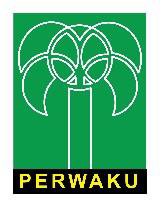Application of potassium fertilizer and plant growth regulators to the growth and productivity of purple sweet potato
Abstract
The study aimed to determine the effect of plant growth regulators and potassium fertilizer on the growth and productivity of three clones of purple sweet potato. The experiment was conducted at IPB University experimental station in Leuwikopo Dramaga Bogor for seven months. The study used a split-plot design with three factors and three replications. The first factor was as a subplot, namely plant growth regulators (PGR) application which consisted of two levels of without PGR (S0) and with PGR (S1) concentration of 2 cc l-1 of water (2,000 ppm). The second factor was as a subplot, namely rates of potassium chloride fertilizer (60, 120, 180 kg ha-1 K2O). The third factor as the main plot was sweet potato clones of (K1) Ayamurasaki, (K2) RIS-03063-05, and (K3) MSU 03028-10. The concentration of 2,000 ppm PGR did not significantly affect growth and tuber yield components. Potassium chloride K2O of 60 kg ha-1 up to 180 kg ha-1 did not significantly affect growth and tuber yield components. MSU 03028-10 clone had the highest total tuber yield (1537.8), healthy tuber (1529.9), unmarketable tuber (740.3), and small tuber (709.0). MSU 03028-10 clones have the longest stem length and the largest number of leaves 3-12 WAP. This study indicates that the MSU 03028-10 clone produces better growth and productivity than other clones.
ABSTRAK
Penelitian bertujuan untuk mengetahui pengaruh zat pengatur tumbuh dan pupuk kalium terhadap pertumbuhan dan produktivitas tiga klon ubi jalar ungu. Percobaan dilakukan di Kebun Percobaan IPB University di Leuwikopo Dramaga Bogor selama tujuh bulan. Penelitian menggunakan rancangan petak terbagi (split-plot design) dengan tiga faktor dan tiga ulangan. Faktor pertama sebagai anak petak yaitu pemberian zat pengatur tumbuh (PGR) yang terdiri dari dua taraf yaitu tanpa PGR (S0) dan dengan PGR (S1) konsentrasi 2 cc l-1 air (2.000 ppm). Faktor kedua sebagai anak petak yaitu takaran pupuk kalium klorida (60, 120, 180 kg ha-1 K2O). Faktor ketiga sebagai petak utama adalah klon ubi jalar (K1) Ayamurasaki, (K2) RIS-03063-05, dan (K3) MSU 03028-10. Konsentrasi PGR 2.000 ppm tidak berpengaruh nyata terhadap komponen pertumbuhan dan hasil umbi. Kalium klorida K2O ukuran 60 kg ha-1 sampai dengan 180 kg ha-1 tidak berpengaruh nyata terhadap komponen pertumbuhan dan hasil umbi. Klon MSU 03028-10 mempunyai hasil total umbi tertinggi (1537,8), umbi sehat (1529,9), umbi tidak layak jual (740,3), dan umbi kecil (709,0). Klon MSU 03028-10 mempunyai panjang batang terpanjang dan jumlah daun terbanyak 3-12 MST. Penelitian ini menunjukkan bahwa klon MSU 03028-10 menghasilkan pertumbuhan dan produktivitas yang lebih baik dibandingkan klon lainnya.
Keywords
References
Assyakur, A.R. (2009). Evaluation of agro-climatic zones from the Schmidt-Fergusson classification using geographic information system (GIS) applications. J. Incandescent 3:17-22.
Bechtold, T. & Mussack, R. (2009). Handbook of Natural Colorants. Willey, United States.
Bradshaw, J.E. & Ramsay, G. (2009). Potato origin and production. In: Singh, J., Kaur, L. (Eds.), Advances in Potato Chemistry and Technology. Academic Press, Burlington, pp. 1–26.
Ginting E., Utomo, J.S., Yulifianti, R., Yusuf, M. (2011). Potential of purple sweet potato as a functional food. Science and Technology of Food Plants 6:116-138.
Jusuf, M., Rahayuningsih, S.A., Wahyuni, T.S. & Restuono, J. (2011). Clones of Hope RIS 03063-05 and MSU 03028-10 Prospective Superior Varieties of Purple Sweet Potato Rich in Anthocyanin. Research Institute for Legumes and Tubers.
Krisantini & Tija, B.O. (2011). Guide to the Use and Application of Growth Regulatory Substances in Ornamental Plants. Bogor: Department of Agronomy and Horticulture, Faculty of Agriculture, Bogor Agricultural University.
Sustainable, E.G. (2011). The role of growth regulators in plant propagation through tissue culture. Journal of AgroBiogen 1:63-68.
Nedunchezhiyem, M., Byju, G. & Jata, S.K. (2012). Sweet potato agronomy. Fruit Vegan. Cereal Sci. Biotech 6:1-10.
Pahlevi, R.W., Guritno, B. & Suminarti, N.E. (2016). The effect of the combined proportions of nitrogen and potassium fertilization on growth, yield and quality of sweet potato (Ipomea batatas (L.) Lamb) Cilembu variety in the lowlands. Journal of Plant Production 4(1):16-22.
Rasyid, B., Samosir, S.R.S. & Sutomo, F. (2010). Response of maize (Zea mays) to various groundwater regimes and application of nitrogen fertilizers. Proceedings of the 2010 National Cereal Week. Center for Agricultural Research and Development Agency for Agricultural Research and Development.
Saati, E.A., Asiyah, R. & Ariesandy, M. (2016). Anthocyanin Pigments: Identification and Benefits for the Food and Pharmaceutical Industry. Malang Muhammadiyah University.
Saputro, B., Priatna, D., Rosadi, R. & Miyazawa, N. (2023). Spatial analysis of paddy field change in Purwakarta Regency, West Java, Indonesia. Indonesian Journal of Applied Environmental Studies 4(1): 22-29.
Sucharat. L., Aroonsri, P., Teerasak, D., Wanwisa, L. & Ratiya, K. (2016). Improvement of chemical stability and activities of anthocyanins by complexation. Current Bioactive Compound 12(1):17-24.
Suwarto, A., Setyawan, D. & Septariasari. (2006). Growth and yield of two sweet potato clones in intercropping with maize. Bull. Agron 34: 87-92.
Wandana, S., Hanum, C. & Sipayung, R. (2012). Growth and yield of sweet potatoes with potassium and tricontanol fertilizers. Online Journal of Agroekotechnology 1(1) http://jurnal.usu.ac.id/index.php/agroekotechnology/article/view/670/477 (Accessed 24 June 2014).
Werlein, H.D., Kutemeyer, C., Schatton, G., Hubbermann, E.M. & Schwarz, K. (2005). Influence of elderberry and black currant concentrates on the growth of microorganisms. Food Control 16:729-733.
Zelelew, D.Z. & Ghebreslassie, B.M. (2015). Response of potato varieties to potassium levels in Hamelmalo area, Eritrea. Journal of Plant Studies 5:11-19.
DOI: 10.33751/injast.v4i2.8966
 Abstract views : 236
Abstract views : 236
Refbacks
- There are currently no refbacks.
Copyright (c) 2024 Indonesian Journal of Applied Environmental Studies

This work is licensed under a Creative Commons Attribution-NonCommercial-ShareAlike 4.0 International License.













